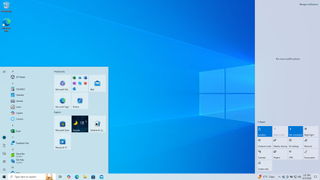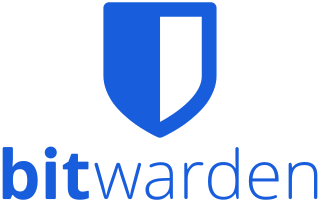
Safari is a web browser developed by Apple. It is built into Apple's operating systems, including macOS, iOS, iPadOS and visionOS, and uses Apple's open-source browser engine WebKit, which was derived from KHTML.

Mozilla Firefox, or simply Firefox, is a free and open-source web browser developed by the Mozilla Foundation and its subsidiary, the Mozilla Corporation. It uses the Gecko rendering engine to display web pages, which implements current and anticipated web standards. Firefox is available for Windows 10 or later versions, macOS, and Linux. Its unofficial ports are available for various Unix and Unix-like operating systems, including FreeBSD, OpenBSD, NetBSD, illumos, and Solaris Unix. It is also available for Android and iOS. However, as with all other iOS web browsers, the iOS version uses the WebKit layout engine instead of Gecko due to platform requirements. An optimized version is also available on the Amazon Fire TV as one of the two main browsers available with Amazon's Silk Browser.
The Security Account Manager (SAM) is a database file in Windows XP, Windows Vista, Windows 7, 8.1, 10 and 11 that stores users' passwords. It can be used to authenticate local and remote users. Beginning with Windows 2000 SP4, Active Directory authenticates remote users. SAM uses cryptographic measures to prevent unauthenticated users accessing the system.
A password manager is a computer program that allows users to store and manage their passwords for local applications or online services such as web applications, online shops or social media. A web browser generally has a built in version of a password manager. These have been criticised frequently as many have stored the passwords in plaintext, allowing hacking attempts.

Opera is a multi-platform web browser developed by its namesake company Opera. The current edition of the browser is based on Chromium. Opera is available on Windows, macOS, Linux, Android, and iOS. There are also mobile versions called Opera Mobile and Opera Mini. Opera users also have access to Opera News, a news app based on an AI platform.

Google Chrome is a web browser developed by Google. It was first released in 2008 for Microsoft Windows, built with free software components from Apple WebKit and Mozilla Firefox. Versions were later released for Linux, macOS, iOS, and also for Android, where it is the default browser. The browser is also the main component of ChromeOS, where it serves as the platform for web applications.
LastPass is a password manager application owned by GoTo. The standard version of LastPass comes with a web interface, but also includes plugins for various web browsers and apps for many smartphones. It also includes support for bookmarklets.

Chromium is a free and open-source web browser project, primarily developed and maintained by Google. It is a widely-used codebase, providing the vast majority of code for Google Chrome and many other browsers, including Microsoft Edge, Samsung Internet, and Opera. The code is also used by several app frameworks.

Mozilla Firefox 3.5 is a version of the Firefox web browser released in June 2009, adding a variety of new features to Firefox. Version 3.5 was touted as being twice as fast as 3.0. It includes private browsing, has tear-off tabs, and uses the Gecko 1.9.1 engine. It was codenamed Shiretoko during development, and was initially numbered Firefox 3.1 before Mozilla developers decided to change the version to 3.5, to reflect the inclusion of a significantly greater scope of changes than were originally planned. It is the last major version to support X BitMap images.

Gatekeeper is a security feature of the macOS operating system by Apple. It enforces code signing and verifies downloaded applications before allowing them to run, thereby reducing the likelihood of inadvertently executing malware. Gatekeeper builds upon File Quarantine, which was introduced in Mac OS X Leopard and expanded in Mac OS X Snow Leopard. The feature originated in version 10.7.3 of Mac OS X Lion as the command-line utility spctl. A graphical user interface was originally added in OS X Mountain Lion (10.8) but was backported to Lion with the 10.7.5 update.

1Password is a password manager developed by the Canadian software company AgileBits Inc. It supports multiple platforms such as iOS, Android, Windows, Linux, and macOS. It provides a place for users to store various passwords, software licenses, and other sensitive information in a virtual vault that is locked with a PBKDF2-guarded master password. By default, the user’s encrypted vault is hosted on AgileBits’ servers for a monthly fee.
The Java software platform provides a number of features designed for improving the security of Java applications. This includes enforcing runtime constraints through the use of the Java Virtual Machine (JVM), a security manager that sandboxes untrusted code from the rest of the operating system, and a suite of security APIs that Java developers can utilise. Despite this, criticism has been directed at the programming language, and Oracle, due to an increase in malicious programs that revealed security vulnerabilities in the JVM, which were subsequently not properly addressed by Oracle in a timely manner.

Proton Mail is a Swiss end-to-end encrypted email service founded in 2013 headquartered in Plan-les-Ouates, Switzerland. It uses client-side encryption to protect email content and user data before they are sent to Proton Mail servers, unlike other common email providers such as Gmail and Outlook.com. The service can be accessed through a webmail client, the Tor network, Windows, macOS and Linux (beta) desktop apps and iOS and Android apps.

Windows 10 is a major release of Microsoft's Windows NT operating system. It is the direct successor to Windows 8.1, which was released nearly two years earlier. It was released to manufacturing on July 15, 2015, and later to retail on July 29, 2015. Windows 10 was made available for download via MSDN and TechNet, as a free upgrade for retail copies of Windows 8 and Windows 8.1 users via the Microsoft Store, and to Windows 7 users via Windows Update. Windows 10 receives new builds on an ongoing basis, which are available at no additional cost to users, in addition to additional test builds of Windows 10, which are available to Windows Insiders. Devices in enterprise environments can receive these updates at a slower pace, or use long-term support milestones that only receive critical updates, such as security patches, over their ten-year lifespan of extended support. In June 2021, Microsoft announced that support for Windows 10 editions which are not in the Long-Term Servicing Channel (LTSC) will end on October 14, 2025.

Enpass is a cross-platform offline password management app available as a freemium software with subscription plans as also with one time payment licence.

Bitwarden is a freemium open-source password management service that stores sensitive information, such as website credentials, in an encrypted vault. The platform offers a variety of client applications, including a web interface, desktop applications, browser extensions, mobile apps, and a command-line interface. Bitwarden offers a free US or European cloud-hosted service as well as the ability to self-host.

BlueKeep is a security vulnerability that was discovered in Microsoft's Remote Desktop Protocol (RDP) implementation, which allows for the possibility of remote code execution.
Bugcrowd is a crowdsourced security platform. It was founded in 2012, and in 2019 it was one of the largest bug bounty and vulnerability disclosure companies on the internet. Bugcrowd runs bug bounty programs and also offers a range of penetration testing services it refers to as "Penetration Testing as a Service" (PTaaS), as well as attack surface management.
DataSpii is a leak that directly compromised the private data of as many as 4 million Chrome and Firefox users via at least eight browser extensions. The eight browser extensions included Hover Zoom, SpeakIt!, SuperZoom, SaveFrom.net Helper, FairShare Unlock, PanelMeasurement, Branded Surveys, and Panel Community Surveys. The private data included personally identifiable information (PII), corporate information (CI), and government information (GI). DataSpii impacted the Pentagon, Zoom, Bank of America, Sony, Kaiser Permanente, Apple, Facebook, Microsoft, Amazon, Symantec, FireEye, Trend Micro, Boeing, SpaceX, and Palo Alto Networks. Highly sensitive information associated with these corporations and agencies was intercepted and sent to foreign-owned entities.











